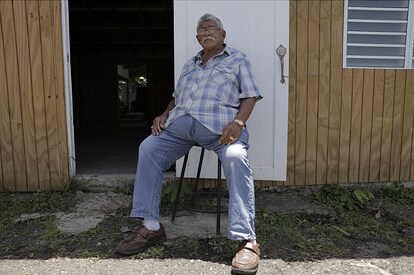
In Your Community
How GAF's VIBE ERG Supports Veteran Employees and Their Local Communities
A group of local GAF employees in Burgaw, North Carolina, is making a difference for veterans and the community as a whole. In 2024 alone, Veteran Involvement Brings Excellence (VIBE) has undertaken several initiatives to give back to Burgaw as well as all who live and work there.Bill Price, GAF production supervisor II at the Burgaw manufacturing plant, is the champion for the group. He recently sat down to discuss VIBE's latest projects and share insight into its motivations.What Is the VIBE ERG at GAF?VIBE is an employee resource group (ERG) available for all GAF employees. It focuses on the needs of veterans who work at GAF, provides a place for employees to share their experiences, and helps foster opportunities for them to give back to their communities.Each GAF plant has a VIBE group and facility leader that organizes the team. GAF leadership supports each group and its community efforts.The VIBE ERG's mission is to create a supportive environment for veterans and active duty members from all military branches. The group's core values are integrity, duty, honor, and respect. VIBE provides personal support for members and helps them manage the realities of being a veteran, such as applying for benefits.Each VIBE group can work on or be involved in whatever projects they wish. While their primary focus is to support veterans, they also strive to give back to the local communities they live and work in.VIBE Projects in BurgawThe VIBE ERG at the Burgaw plant meets regularly to discuss the activities they want to get involved in. This year, the group has participated in several projects:17 GAF-employed veterans volunteered for the second annual Habitat for Humanity veteran's build, which GAF donated roofing materials for.Team members participated in a food and clothing drive for a local women's shelter.A local veteran service officer visited the plant to help workers learn about—and gain access to—benefits and resources.In honor of Memorial Day, VIBE provided an opportunity for volunteers to place flags at veterans' tombstones at Coastal Carolina State Veterans Cemetery and Wilmington National Cemetery.That's not all the group has planned for. Future initiatives include hosting Toys for Tots at the plant, adopting a highway in honor of veterans, representing GAF at a booth for the Burgaw Blueberry Festival, and continuing to support local veterans in need.How VIBE Impacts GAF and the CommunityThe Burgaw facility, which employs about 247 people, has one of the largest veteran groups within GAF, totaling 28 members. The facility manufactures ventilation products, such as roof vents, foundation vents, turbines, and heating and cooling ductwork."The group has brought the veterans at the plant together to work toward a common goal and also given everyone the comradery they were accustomed to from when they were in the service," Price says. "I think this has had an impact not only on the employees involved but also on the plant as a whole. All of us involved enjoy being part of the team and giving back to those in need."Price notes that each project the group has been a part of has been well received. "We received many thanks from the families that were receiving assistance from the Habitat build and also from the staff at the local women's shelter during the food and clothing drive," he says. "I have no doubt that as we continue to be involved with more events within the community, it will only get better."Giving Back While Looking AheadGAF believes in giving back to its employees and the communities they work in. VIBE is just one of seven GAF ERGs making a difference in team members' lives and those most important to them.Curious to learn more about the opportunities and culture at GAF? Visit our GAF Careers page.
By Authors Dawn Killough
August 08, 2024




